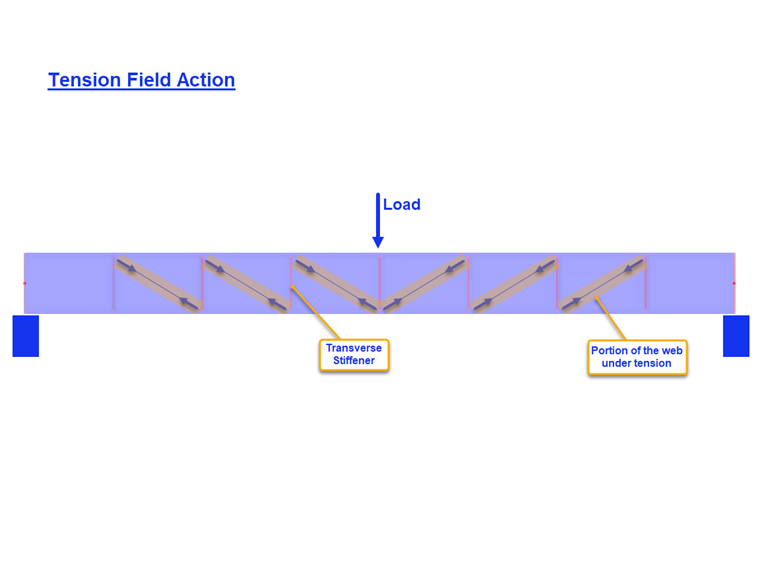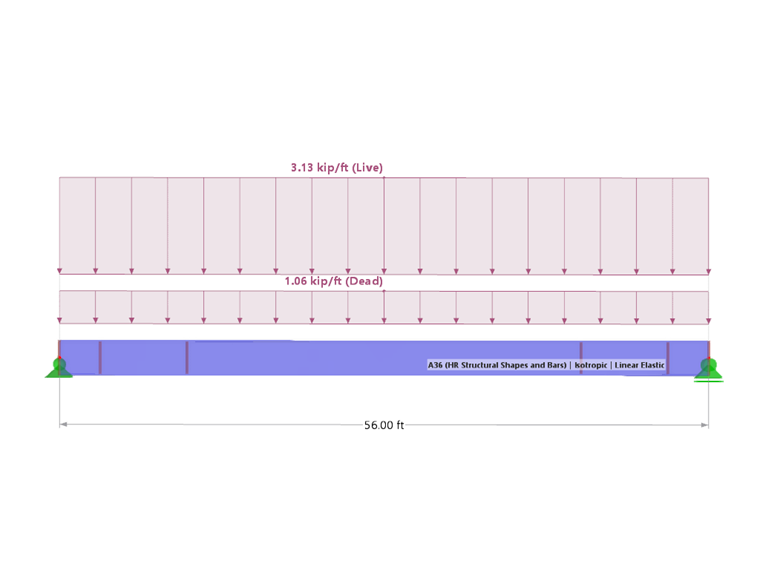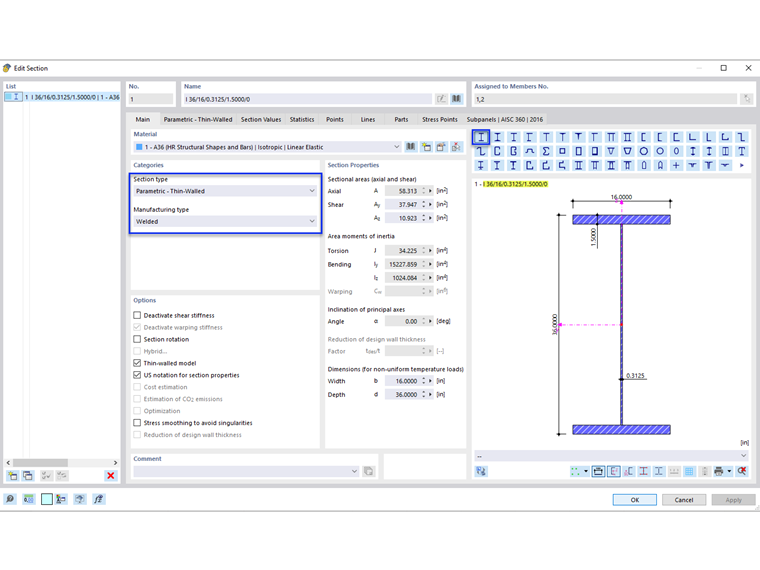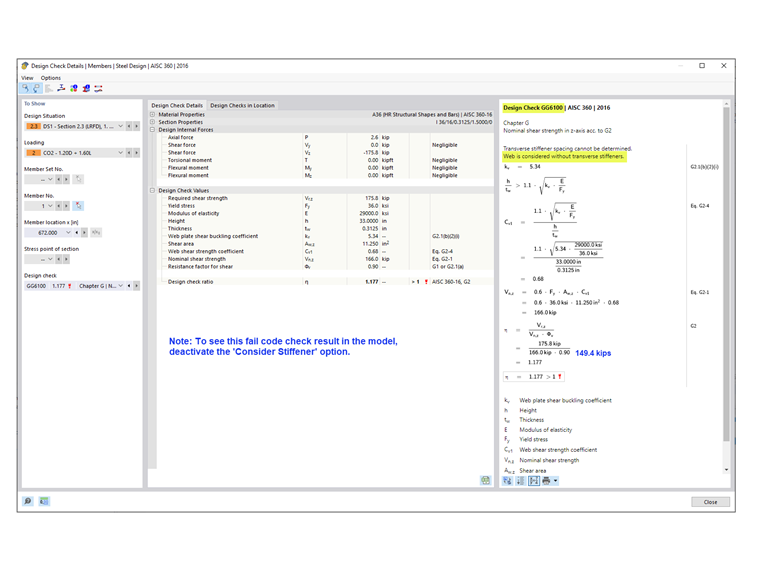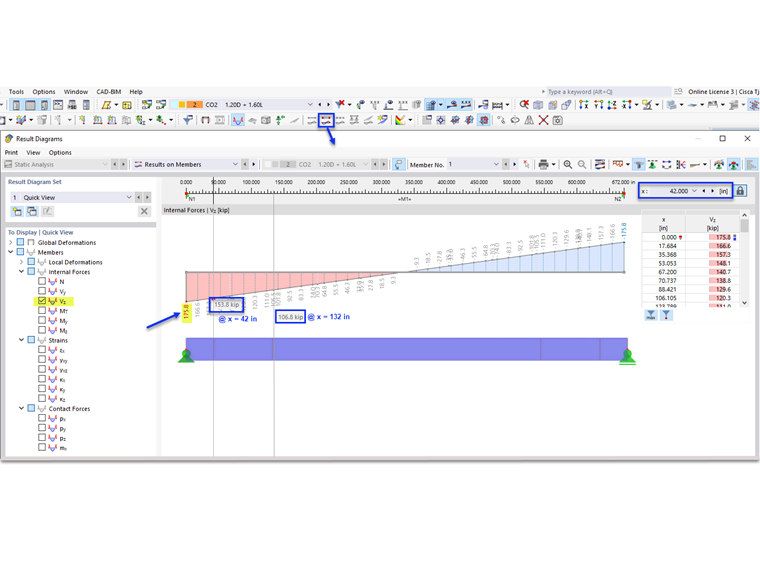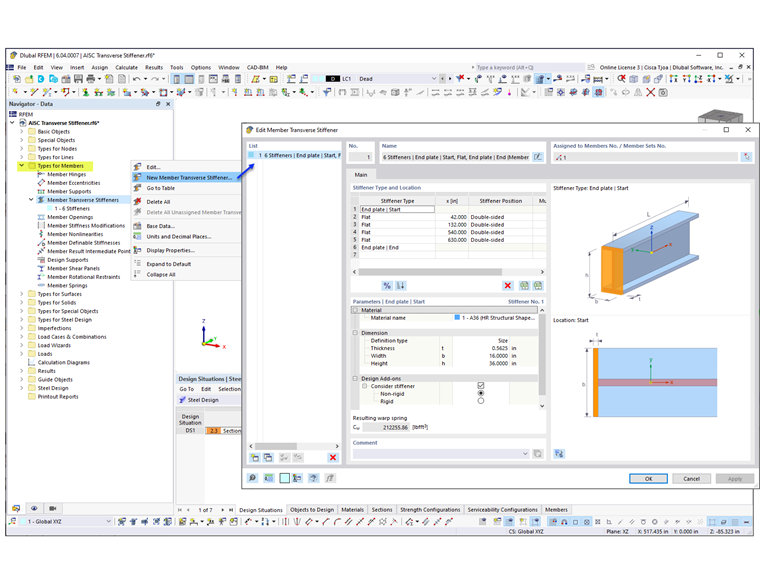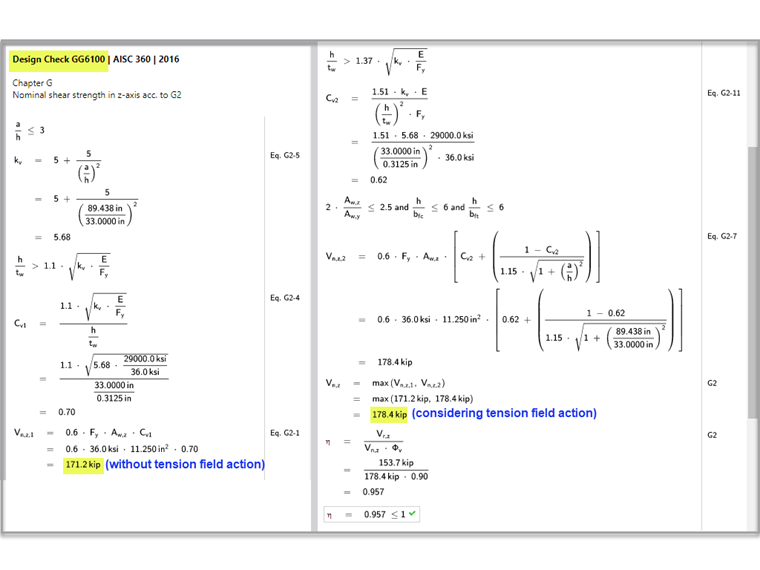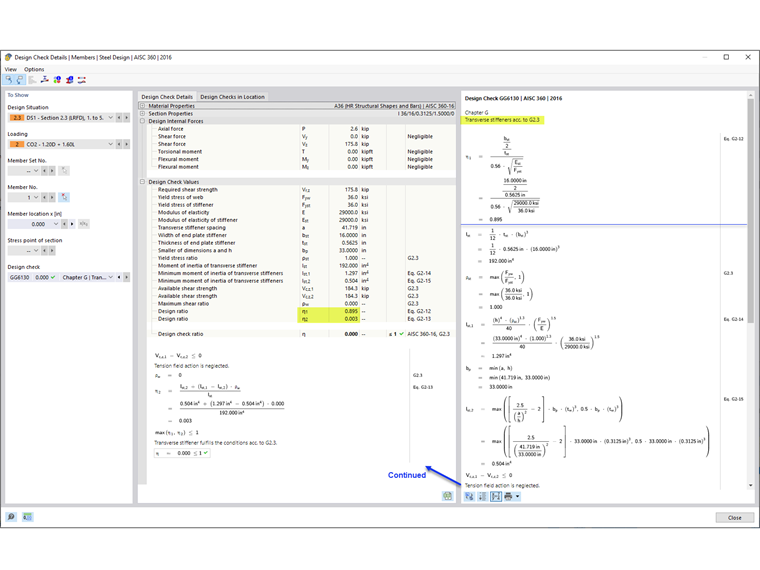В программе RFEM 6 можно использовать функцию «Поперечные элементы жесткости стержня», благодаря которой можно добавить требуемые элементы жесткости по длине стержня. Повышенную прочность на сдвиг от элемента жёсткости можно учесть в аддоне Расчёт стальных конструкций.
Раздел AISC G2 «Двутавровые стержни и швеллеры» [1] состоит из трех частей:
- G2.1 Прочность на сдвиг стенок без действия области растяжения
- G2.2 Прочность на сдвиг внутренних стеночных панелей с a/h ≤ 3, с учетом действия области растяжения
- G2.3 Поперечные элементы жесткости
Что такое действие области растяжения?
Действие области растяжения - это явление, при котором стенка плоской балки рассчитывается так, чтобы она имела высокую прочность на потерю устойчивости стойки. Стенка в состоянии после потери устойчивости все еще способна воспринимать приложенную нагрузку за счет растяжения.
Действие растяжения можно учесть для внутренних панелей, только если a/h не превышает 3,0 (AISC, раздел G2.2), где a - расстояние между элементами жесткости в свету, а h - расстояние между полками в свету.
Пример
Для сравнения прочности на сдвиг, полученной по модели RFEM, представлены примеры G.8A и G.8B из нормы AISC 2016 Design Examples [2]. Длина балки 16 м, глубина 3 м, толщина полки 40 мм, ширина 40 см, а толщина стенки 5/16 дюйма. Сжатая полка непрерывно скреплена связями, вследствие чего мы можем деактивировать в программе проверку потери устойчивости плоской формы изгиба (LTB).
Составную балку можно создать с помощью типа сечения «Параметрическое - тонкостенное» и типа изготовления «Сварное».
1) Проверьте, требуются ли поперечные элементы жесткости по AISC, раздел G2.3
Поперечные элементы жёсткости не требуются, если выполняется одно из следующих условий.
- h/tw меньше чем 2,46 √(E/Fy )
33,0 in/0,3125 in = 105,6 больше, чем 2,46*√(29 000 ksi/36 ksi) = 69,82
- Требуемая прочность на сдвиг меньше доступной прочности. Как показано в расчетной проверке GG6100, требуемая прочность на сдвиг (175,8 kips) больше, чем имеющаяся прочность на сдвиг (149,4 kips).
- Поскольку ни одно из вышеперечисленных условий не выполняется, требуются поперечные элементы жёсткости.
2) Задайте расстояние между элементами жесткости
Таблицы 3-16a, 3-16b и 3-16c из Руководства AISC по стальным конструкциям [3] помогут вам определить требуемое расстояние между элементами жесткости на основе соотношения h/tw и требуемого напряжения. В качестве альтернативы, можно применить итерационный метод проб и ошибок.
В нашем примере для торцевой панели задан шаг 42 дюйма. Требуемую прочность на сдвиг в данном месте можно легко определить с помощью инструмента «Диаграмма результатов для выбранного стержня». В конце первой панели Vz = 153,8 kips превышает имеющуюся прочность = 149,4 kips. Поэтому так нужно добавить вторую панель с шагом 90°. Третья панель не требуется, так как V = 106,8 kips меньше, чем 149,4 kips.
3) Добавить «Поперечные элементы жесткости стержня» из списка в «Типы для стержней» в RFEM
В программе доступно несколько типов ребер жесткости. В нашем примере «Торцевая пластина» используется в начале и в конце стержня. Для промежуточных элементов жесткости будет выбрано значение «Плоский». Положение, материал и размер определяются для каждого элемента жесткости.
Опция «Учитывать элемент жёсткости» доступна с момента активации аддона Расчёт стальных конструкций. Данную функцию можно свободно включать и выключать, чтобы учесть в расчете влияние каждого отдельного элемента жесткости. Для «Торцевой пластины» элемент жёсткости может считаться «Нежёстким» или «Жёстким». «Нежёсткая» выбирается, когда действие области растяжения не может быть учтено для торцевой панели.
Результирующая пружина депланации рассчитывается автоматически. Однако, она не будет учитываться в расчете без аддона Депланация при кручении (7СтСв). При расчете с 6 степенями свободы поперечные элементы жёсткости не влияют на жёсткость.
4) Прочность на сдвиг в аддоне Расчёт стальных конструкций
Как указано в разделе G2.2, можно применить большую номинальную прочность на сдвиг из раздела G2.1 (без действия области растяжения) и раздела G2.2 (с учетом действия области растяжения). Оба условия проверяются в аддоне Расчёт стальных конструкций в разделе Расчётная проверка GG6100.
5) Требования к поперечному элементу жесткости по AISC, раздел G2.3 [1]
В дополнение к определению прочности стержня на сдвиг, расчётная проверка GG6130 проверяет:
- Соотношение ширины и толщины элемента жёсткости (AISC упр. G2-12)
- Момент инерции элемента жесткости (AISC уравнение G2-13)
Используя опцию «Поперечные элементы жесткости стержня», можно в RFEM учесть усиленные стенки плоских балок.
